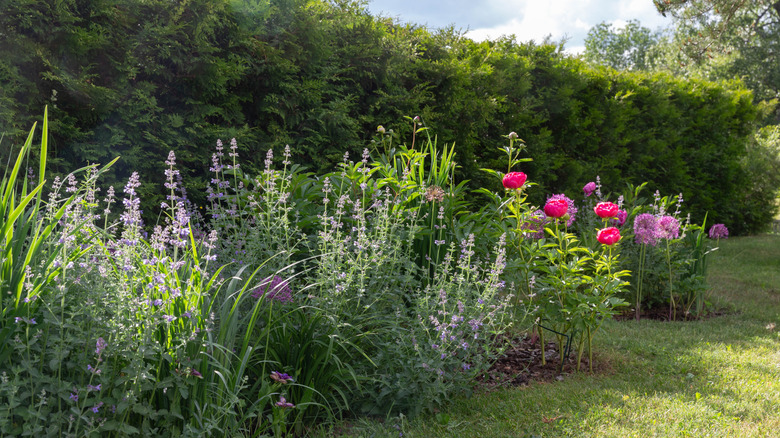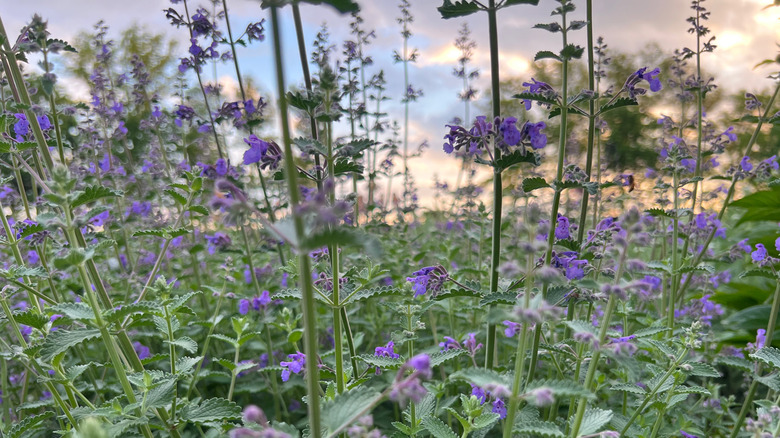Does Catnip Keep Beetles Away? What To Know Before Planting
Chewed leaves and blossoms, dieback, holes in stems, and damage to twigs or bark are signs that beetles have invaded your landscape. While the vast majority of insects are beneficial or benign, the 1% that are classified as pests can make a mess of your garden. Gardeners have used catnip (Nepeta cataria) as an insect repellent for millennia, but it wasn't until 1941 that scientists discovered the compound in catnip that makes it both repel insects and attract cats. Nepelalactone, an iridoid, makes it as effective as DEET in controlling some insects, including beetles, by triggering a pain receptor. The plant repels both benign and destructive beetles, so it should be used as part of an integrated pest management system that combines a variety of techniques to control insect infestations.
Asian lady beetles, a spotted orange insect, are one of the benign insects that nepetalactone repels. They help keep your garden pest-free by eating aphids and other soft-bodied insects including scale insects, but they can be a nuisance when they get inside your house. You can make your home inhospitable to lady beetles while letting them do their job outdoors by growing catnip in containers inside if you have a sunny location like a windowsill. If you have cats that might find the plant irresistible, grow it in a hanging basket in a sunny window. If you don't have cats, or have cats and do not want them triggered, consider using catnip essential oil in a diffuser.
Growing catnip in the garden
Catnip, a member of the mint family, is hardy in zones 3 through 9. The herbaceous perennial is native to Asia and Europe, but has naturalized in the U.S., meaning it has established itself in non-native areas and can reproduce independently. Catnip is easy to grow because of its tolerance for a variety of growing conditions. It will thrive in almost any well-drained soil in full sun or partial shade. If you live in a hot climate, give the plant some afternoon shade. It is drought-resistant, tolerates air pollution, is not susceptible to pests and diseases, and deer leave it alone. Mature plants grow in mounds and can reach up to 3 feet tall. Blue flowers on spikes 1 to 6 inches tall bloom in the spring and continue to bloom through the summer. Cut the flowers back after they're spent to encourage new blooming.
Catnip attracts pollinators like bees and butterflies, and its foliage provides food for moth larvae. The plants have low toxicity, usually only causing diarrhea or vomiting in cats that have overindulged. Like other mints, catnip can take over the garden if left unchecked. Options for control include mowing the plants to the ground, digging them up, or dividing the plants and replanting them in other locations. Keep in mind that catnip will regrow unless you dig up all the plant, including the underground rhizomes or use an herbicide to kill it.

